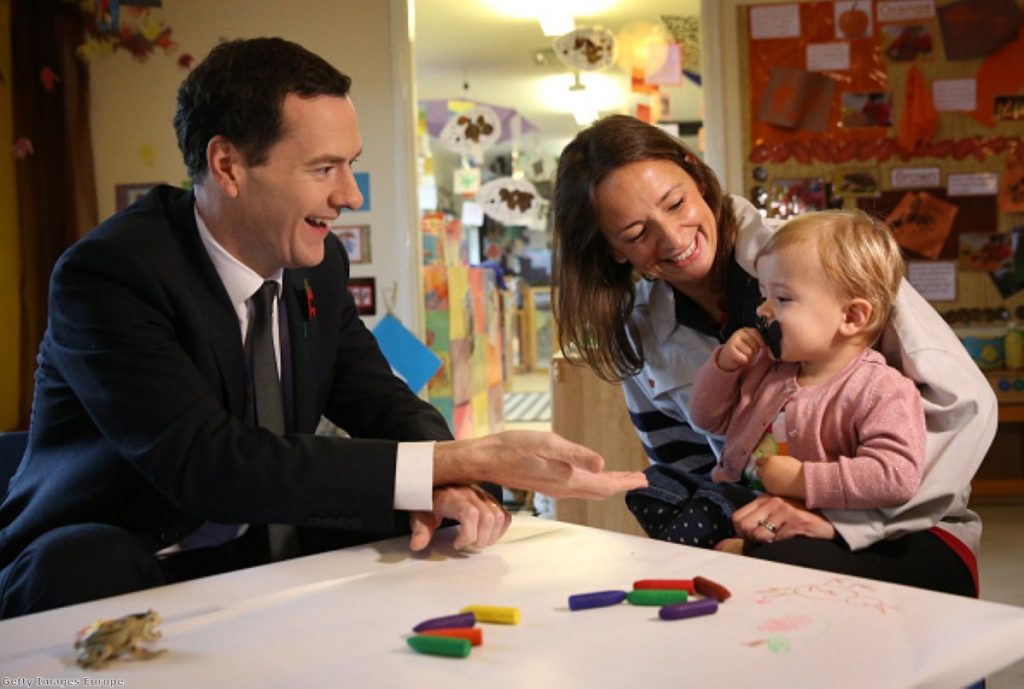Osborne’s ‘tax statements’ are publicly funded Tory propaganda
The government is currently preparing to send out millions of 'personal tax statements' across the country.
These statements include a pie chart suggesting that around a quarter of all the taxes we currently pay are spent on "welfare".
Any reasonable person looking at these pie charts will receive the impression that one pound in every four we currently pay in tax, goes to people 'claiming benefits'.


So is this true? Well not according to new analysis by the Institute for Fiscal Studies (IFS).
According to the IFS, large chunks of what George Osborne has classed as 'welfare' is actually money spent on things that would never be normally classified in that way.
According to the Treasury's own figures, £28.5 billion of the £168 billion Osborne labels 'welfare' is actually money that is being spent on 'personal social services.'
Personal social services includes spending on things like care for looked after children as well as the long term care of the elderly, sick and disabled.
As the IFS points out "this is a number that in many analyses one would want to report separately from other welfare spending." This is not welfare spending in any normal definition of the word. It is social care.
Osborne's "welfare" slice also includes a further £20 billion of spending on pensions for public sector workers including nurses and soldiers and even the chancellor himself.
Again this is not something that would normally be classed as welfare. It is part and parcel of the pay package all public sector workers normally receive.
As the IFS points out: "The pay of nurses counts as health spending. One could count their pensions in the same way."
By lumping in public sector pensions with 'welfare' Osborne has stretched the definition of the word beyond any commonly understood meaning.
By Osborne's new definition almost any public spending that ends up in the hands of individuals could also be classed as welfare. This is ludicrous.
Osborne's 'welfare' slice also includes £28 billion on pension-related benefits such as pension credit. The case for labelling these items as welfare is stronger, but many reading the statement will have assumed this is already included in the other slice of spending labeled as state pensions.
And once you strip away all of these categories, the amount of money spent on what most people would label 'welfare' – unemployment benefit – is vanishingly small at less than one per cent of all government spending.
This matters because public perceptions of welfare spending are already wildly out of line with reality. A recent poll found that the public believe 24% of people are currently unemployed. The real figure is just 7%.
By deliberately inflating the 'welfare' bill, the government is playing into the false public perception that huge sections of the public are currently languishing on the dole.
These personal tax statements will make this perception even less accurate than it currently is.
As the IFS concludes today: "lumping a quarter of total spending into one bucket labelled 'welfare' may not strike the most helpful balance".
Indeed it doesn't, but then Osborne's pie charts are not designed to help the public better understand public spending, they are designed to mislead them about it.
More importantly Osborne's charts are calculated to justify a programme of government cuts just as the public are due to go the polls.
By releasing these statements in this way and at this time, Osborne is using public money for the purpose of political propaganda. And he is doing so, while pretending to stand up for the cause of 'taxpayer value'.
As Iain Duncan Smith has previously shown, members of this government often seem to believe that facts and statistics should be made to fit their arguments, rather than the other way around.
Osborne's grossly misleading "personal tax statements" suggest that this tendency now goes all the way to the top.


